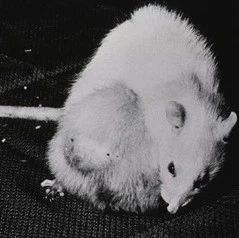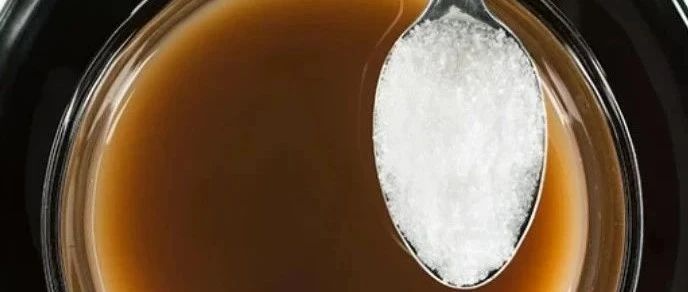
用陌生人干细胞也可修复心脏
美国心脏病协会年会5日发布了一项研究结果,研究显示,陌生人捐献的干细胞对重建患者心脏组织同样安全、有效。研究主持者、迈阿密大学的乔舒亚·黑尔博士说,研究中所用干细胞为采自骨髓的一类特殊干细胞,细胞表面没有一种关键特征,因此免疫系统不会认为它们是外来“入侵者”而发动袭击。
参与研究的30名志愿者都有过心脏病发作历史,发作最早的是30年前,最迟的也在数年前。心脏病发作留下的瘢痕组织会削弱心脏的功能,致使心脏肌肉肥厚、松弛,不能有效地泵出血液,因此这些志愿者都有心脏衰竭症状。
研究人员采集这些患者和另外一些志愿者的骨髓干细胞,在约翰斯·霍普金斯大学的实验室内培养,一个月后返回迈阿密大学用于治疗。
研究人员从患者腹股沟动脉插入导管,借助导管把干细胞运至心脏疤痕组织区域。15名患者用自己的骨髓干细胞,另外15人用陌生人的干细胞。
同样有效
一年后,研究人员发现30名志愿者的疤痕组织缩小了三分之一。两组志愿者的行走距离、生活质量都有所改善,心脏泵送血液的能力没有显著差别。
志愿者之一胡安·洛佩斯在治疗中使用自己的骨髓干细胞。美联社6日援引这名70岁老汉的话报道,干细胞治疗效果显著,让他得以重返工程师的工作岗位,还能骑健身自行车。
“这改变了我的生活,”洛佩斯说,“每一天、每一个星期、每一个月,我都能感到身体好转,不再胸闷气短,体力充沛。”
这项研究结果由《美国医学会杂志》发表。研究人员希望,一段时间以后,这些患者的状况进一步改善,治疗取得更好效果。
优点明显
研究人员认为,这项研究最吸引人之初在于使用他人捐献的干细胞,无须匹配血型或组织。干细胞是一类尚未完全分化、可以变为新的器官组织的细胞。让干细胞形成新的心脏细胞,用来修复病人心脏中的损伤是当前心脏病治疗的研究方向之一。
黑尔说:“或许可以在血库中备好干细胞,当患者需要干细胞治疗时,可以立即提供。”而且,一人捐献的骨髓足以为10名患者提供治疗所需的干细胞。
出席心脏病协会年会的哈佛大学附属布里格姆妇科医院医生埃利奥特·安特曼称赞迈阿密大学的这项研究。他说,按照这一结果,可以考虑建一个“精密版的血库,开辟干细胞治疗的全新大道”,这样做的优点之一是不必为每一名患者培养特定的干细胞,省却等候时间,减少患者的病痛。

 Comparison of Allogeneic vs Autologous Bone Marrow–Derived Mesenchymal Stem Cells Delivered by Transendocardial Injection in Patients With Ischemic Cardiomyopathy: The POSEIDON Randomized Trial
Comparison of Allogeneic vs Autologous Bone Marrow–Derived Mesenchymal Stem Cells Delivered by Transendocardial Injection in Patients With Ischemic Cardiomyopathy: The POSEIDON Randomized Trial
Joshua M. Hare, MD, Joel E. Fishman, MD, PhD, Gary Gerstenblith, MD, Darcy L. DiFede Velazquez, RN, BSN, Juan P. Zambrano, MD, Viky Y. Suncion, MD, Melissa Tracy, MD, Eduard Ghersin, MD, Peter V. Johnston, MD, Jeffrey A. Brinker, MD, Elayne Breton, BSN, RN, Janice Davis-Sproul, MAS, Ivonne H. Schulman, MD, John Byrnes, MD, Adam M. Mendizabal, MS, Maureen H. Lowery, MD, Didier Rouy, MD, PhD, Peter Altman, PhD, Cheryl Wong Po Foo, PhD, Phillip Ruiz, MD, Alexandra Amador, BSMT, Jose Da Silva, PhD, Ian K. McNiece, PhD, Alan W. Heldman, MD
Context Mesenchymal stem cells (MSCs) are under evaluation as a therapy for ischemic cardiomyopathy (ICM). Both autologous and allogeneic MSC therapies are possible; however, their safety and efficacy have not been compared.
Objective To test whether allogeneic MSCs are as safe and effective as autologous MSCs in patients with left ventricular (LV) dysfunction due to ICM.
Design, Setting, and Patients A phase 1/2 randomized comparison (POSEIDON study) in a US tertiary-care referral hospital of allogeneic and autologous MSCs in 30 patients with LV dysfunction due to ICM between April 2, 2010, and September 14, 2011, with 13-month follow-up.
Intervention Twenty million, 100 million, or 200 million cells (5 patients in each cell type per dose level) were delivered by transendocardial stem cell injection into 10 LV sites.
Main Outcome Measures Thirty-day postcatheterization incidence of predefined treatment-emergent serious adverse events (SAEs). Efficacy assessments included 6-minute walk test, exercise peak VO2, Minnesota Living with Heart Failure Questionnaire (MLHFQ), New York Heart Association class, LV volumes, ejection fraction (EF), early enhancement defect (EED; infarct size), and sphericity index.
Results Within 30 days, 1 patient in each group (treatment-emergent SAE rate, 6.7%) was hospitalized for heart failure, less than the prespecified stopping event rate of 25%. The 1-year incidence of SAEs was 33.3% (n = 5) in the allogeneic group and 53.3% (n = 8) in the autologous group (P = .46). At 1 year, there were no ventricular arrhythmia SAEs observed among allogeneic recipients compared with 4 patients (26.7%) in the autologous group (P = .10). Relative to baseline, autologous but not allogeneic MSC therapy was associated with an improvement in the 6-minute walk test and the MLHFQ score, but neither improved exercise VO2 max. Allogeneic and autologous MSCs reduced mean EED by −33.21% (95% CI, −43.61% to −22.81%; P < .001) and sphericity index but did not increase EF. Allogeneic MSCs reduced LV end-diastolic volumes. Low-dose concentration MSCs (20 million cells) produced greatest reductions in LV volumes and increased EF. Allogeneic MSCs did not stimulate significant donor-specific alloimmune reactions.
Conclusions In this early-stage study of patients with ICM, transendocardial injection of allogeneic and autologous MSCs without a placebo control were both associated with low rates of treatment-emergent SAEs, including immunologic reactions. In aggregate, MSC injection favorably affected patient functional capacity, quality of life, and ventricular remodeling.






